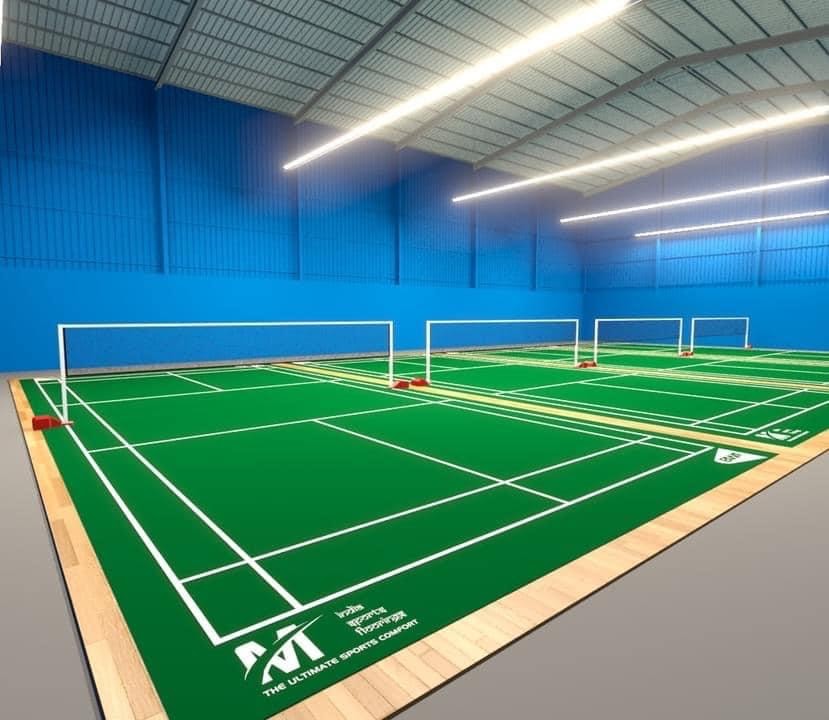Starting a badminton court business can be an exciting venture for badminton enthusiasts and entrepreneurs alike. Not only does it provide an opportunity to contribute to the growth of the sport, but it can also be a profitable endeavor. This article will guide you through ten easy steps to help you kickstart your badminton court business.
Before diving into the business, it’s crucial to conduct thorough research and analysis of the badminton market in your area. Identify the demand for badminton facilities, competition, target demographics, and potential profitability. This research will serve as the foundation for your business plan.
A well-crafted business plan is essential for any successful venture. Outline your goals, strategies, target market, marketing plans, financial projections, and operational procedures. Consider factors such as facility size, court availability, membership fees, and additional services like coaching or equipment sales.
Once you have a solid business plan, you’ll need to secure funding for your badminton court business. Explore different options like personal savings, bank loans, investors, or partnerships. Prepare a comprehensive financial plan to demonstrate the viability of your business to potential investors or lenders.
Selecting the right location is critical for your badminton court business. Look for areas with high population density, accessibility, and proximity to potential customers. Consider factors like parking facilities, public transportation, and nearby amenities. Leasing or purchasing a property that meets your space requirements is crucial.
Before launching your business, ensure you comply with all legal requirements. Register your business, obtain necessary licenses and permits, and adhere to zoning regulations. Consult with an attorney to ensure you have covered all legal aspects related to liability, insurance, and contracts.
Once you have secured a location, design your badminton court facility. Collaborate with architects and contractors to create an optimal layout that includes multiple courts, changing rooms, reception area, and other amenities. Focus on creating a comfortable and appealing environment for players and spectators.
Invest in high-quality badminton equipment and supplies to provide an excellent playing experience for your customers. Purchase durable badminton nets, rackets, shuttlecocks, court mats, lighting fixtures, and other necessary equipment. Consider partnering with reputable suppliers or manufacturers to ensure the quality and longevity of your inventory.
Building a competent and friendly team is crucial for the smooth operation of your badminton court business. Hire staff members who are knowledgeable about the sport and customer service-oriented. Recruit court attendants, coaches, receptionists, and maintenance personnel as per your facility’s requirements. Provide proper training to ensure that your staff delivers exceptional service to players and visitors.
To attract customers to your badminton court, implement effective marketing strategies. Create a compelling website that showcases your facilities, services, and pricing options. Utilize social media platforms to engage with your target audience, share updates, and run promotional campaigns. Consider partnering with local sports clubs, schools, and community centers to increase visibility and attract potential players.
Plan a grand opening event to generate excitement and awareness about your badminton court business. Offer discounts, organize tournaments, or host coaching sessions to entice players to visit your facility. Once operational, maintain a well-organized schedule for court bookings, implement efficient billing systems, and provide excellent customer service. Regularly evaluate and improve your operations based on player feedback.
Starting a badminton court business requires careful planning and execution, but it can be a rewarding venture. By following these ten easy steps, you can lay a strong foundation for your business and create a thriving badminton community. Remember to prioritize customer satisfaction, stay updated with industry trends, and continuously seek opportunities for growth and improvement.
The cost of starting a badminton court business can vary depending on factors such as location, facility size, equipment quality, and renovation expenses. It’s advisable to create a detailed budget by considering costs related to leasing/purchasing a property, construction, equipment procurement, legal fees, marketing, and staffing.
Legal requirements may vary by location, but generally, you’ll need to register your business, obtain necessary licenses and permits, adhere to zoning regulations, and comply with health and safety guidelines. It’s crucial to consult with a local attorney or business advisor to ensure compliance with all legal obligations.
To attract customers, focus on marketing and promotion. Create a strong online presence through a website and social media platforms. Offer competitive pricing, organize events or tournaments, provide exceptional customer service, and consider offering additional services like coaching or equipment sales. Building relationships with local sports clubs, schools, and community organizations can also help attract customers.
The profitability of a badminton court business depends on various factors such as location, market demand, pricing strategy, operational efficiency, and overhead costs. Conduct thorough market research and financial analysis to determine the potential profitability of your specific business venture.
Running a badminton court business may come with challenges such as competition from other sports facilities, seasonal fluctuations in demand, maintenance and equipment upkeep, staffing issues
2025 © All Rights Reserved, India Sports Floorings
